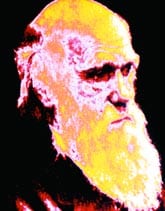Darwin was no physicist, but his approach to science will be familiar to us

Charles Darwin, who was born 200 years ago, is rightly being celebrated as the founding father of modern biology with a series of events around the world this year. Just as Einstein revolutionized physics, so Darwin changed our understanding of life. He came to realize that “natural selection” could account for the huge diversity of life, with more-efficient groups — arising from random variation — always replacing less-efficient groups in a particular environment as a result of competition. After publishing his seminal book On the Origin of Species in 1859 — exactly 150 years ago — Darwin, like Einstein, became the most noted scientist of his time.
But Darwin was no physicist and Physics World is not the place for an in-depth analysis of his achievements. Indeed, he had no particular interest in physics — or astronomy for that matter. Darwin did, however, approach science in a way that will be familiar to many physicists. As a result of spending five years on board the HMS Beagle from 1831 to 1836, he painstakingly obtained a welter of information about animals — notably different finches — on the Galápagos Islands off the coast of Ecuador. Darwin’s resulting theory of evolution, although not in any way mathematical, was based squarely on firm scientific evidence and careful thought. And like any good physicist, Darwin acknowledged the theory’s limitations — he could not, for example, explain exactly why natural selection came about — and was in no doubt that future observations could overturn it. As it turns out, evolution has stood the test of time and is today a thriving field of study in biology.
But while Darwin himself had no formal links with physics, there have been many fruitful collaborations between physicists and biologists over the years — most famously in elucidating the structure of DNA and in developing techniques for medical imaging. Less successful has been physicists’ long-cherished hope that quantum mechanics could offer a new framework for understanding living systems. As Paul Davies reminds us in opening this special issue, Erwin Schrödinger published his famous book What is Life? as far back as 1944. But although no clear “quantum life principle” has yet emerged, there is, Davies argues, clear and accumulating evidence that quantum mechanics plays a key role in biology (see “The quantum life”). Elsewhere in this issue, Jochen Guck shows how physics is needed to explain, for example, how light passes through the “glial” cells on the way to the retina (see “Do cells care about physics?”), while Sam Wang looks at how physicists are helping to understand how the brain is wired and processes information (see “Postcards from the brain”).
Ironically for someone with little interest in physics, Darwin’s ideas of reproduction and natural selection actually crop up in some areas of modern physics. In particular, the theorist Lee Smolin has suggested that a collapsing black hole can give birth to another universe with slightly different fundamental constants, with the universe geared so that the production of black holes is maximized. Whether those Darwinian ideas play a role in cosmology or not, Darwin’s greatest legacy for physics is that in rejecting the need for a supernatural explanation for life and the universe, he — as Leonard Susskind concludes this issue (see “Darwin’s legacy”) — set the standard for what any explanation of nature should be like.



